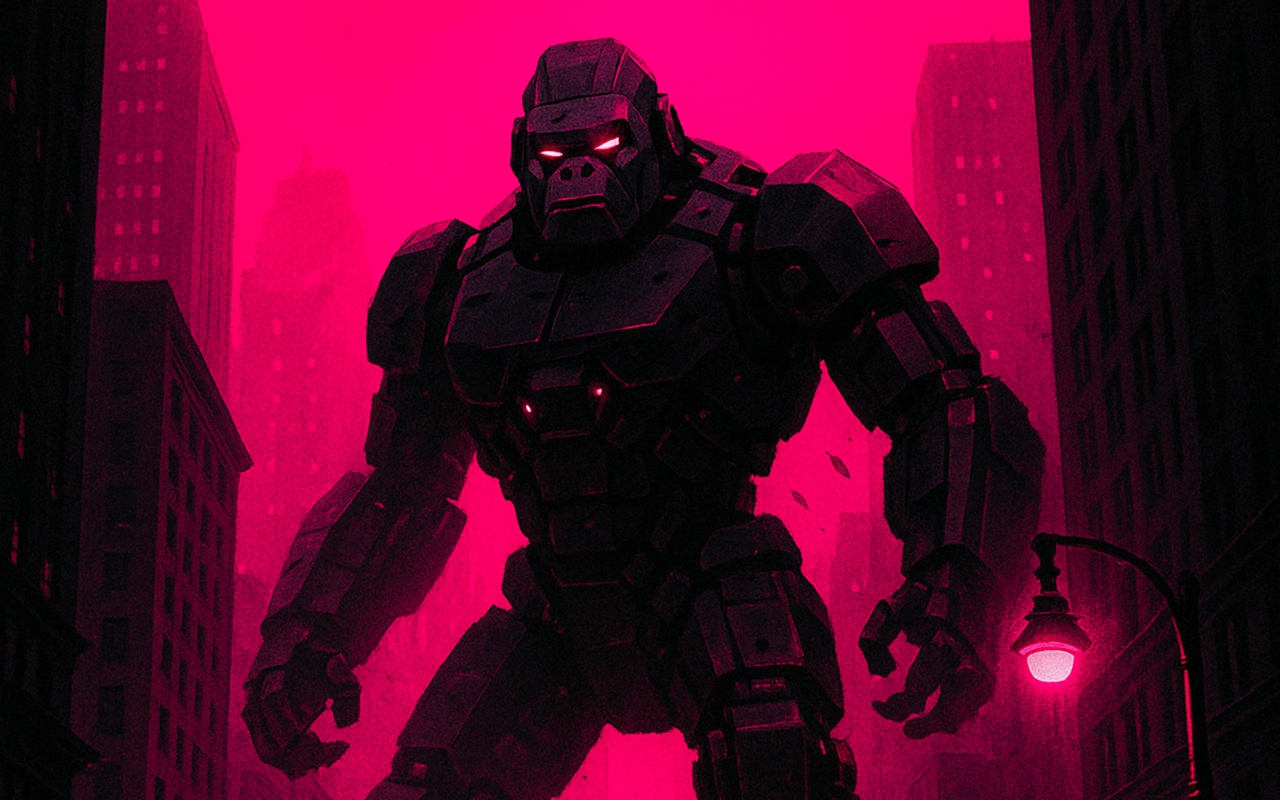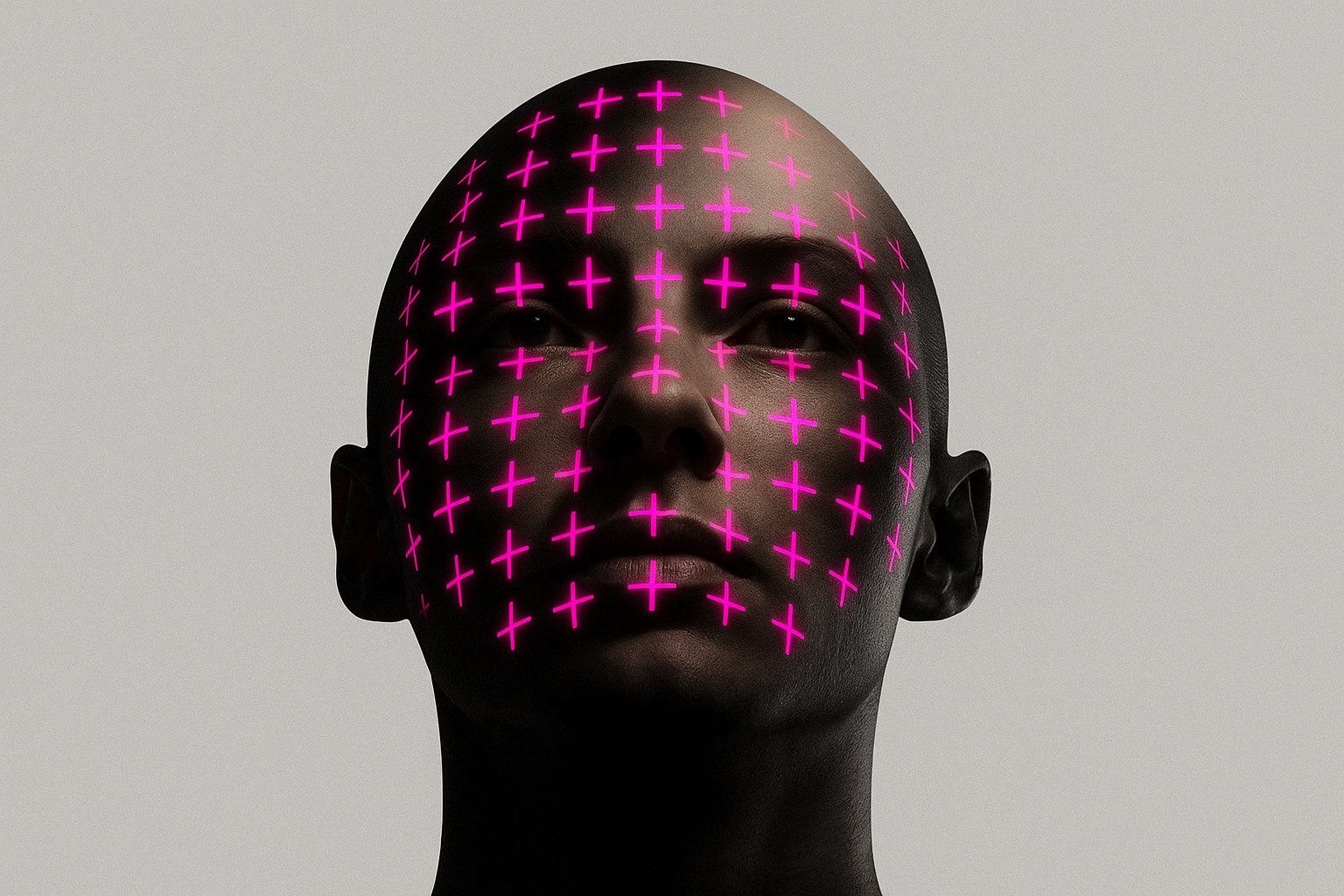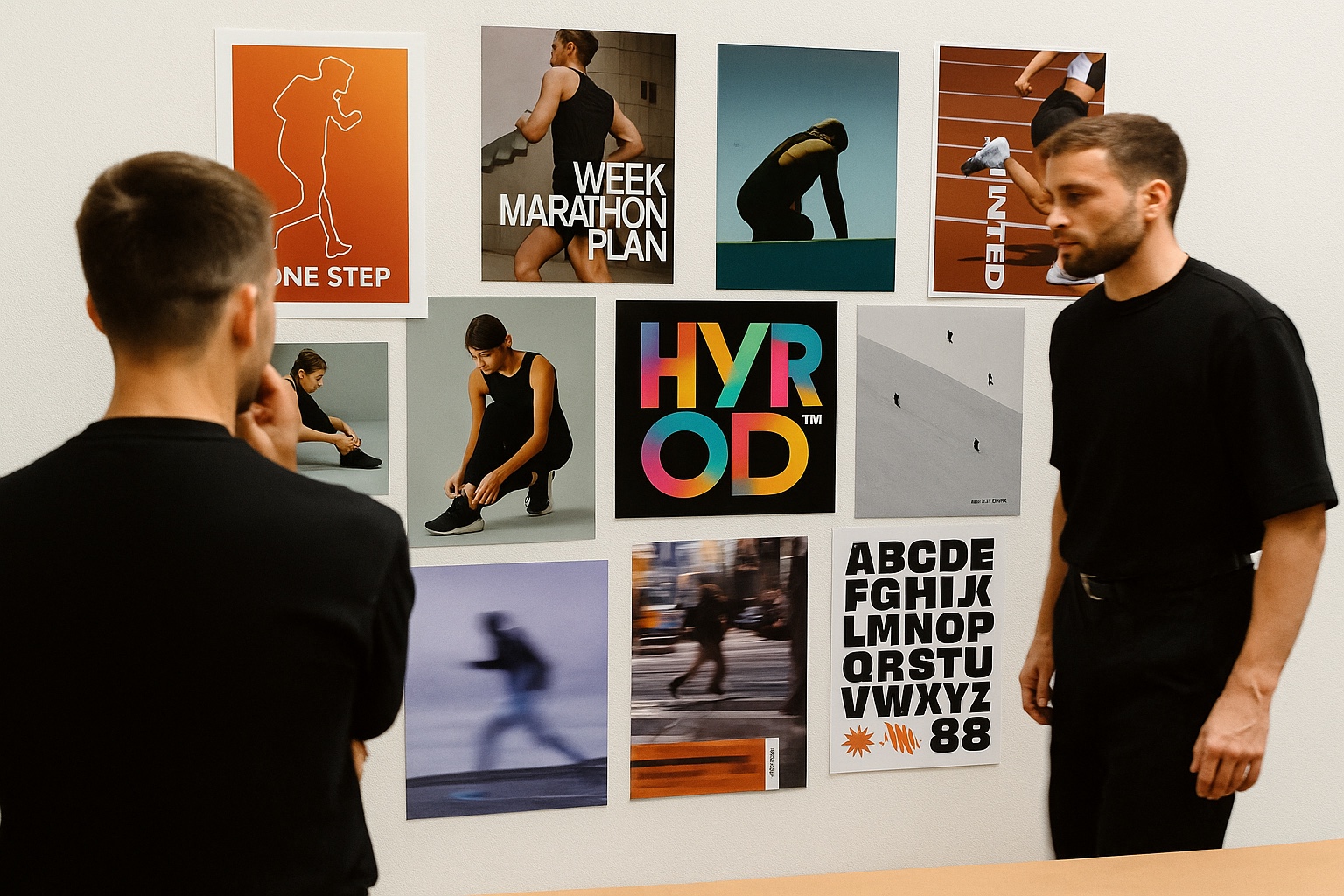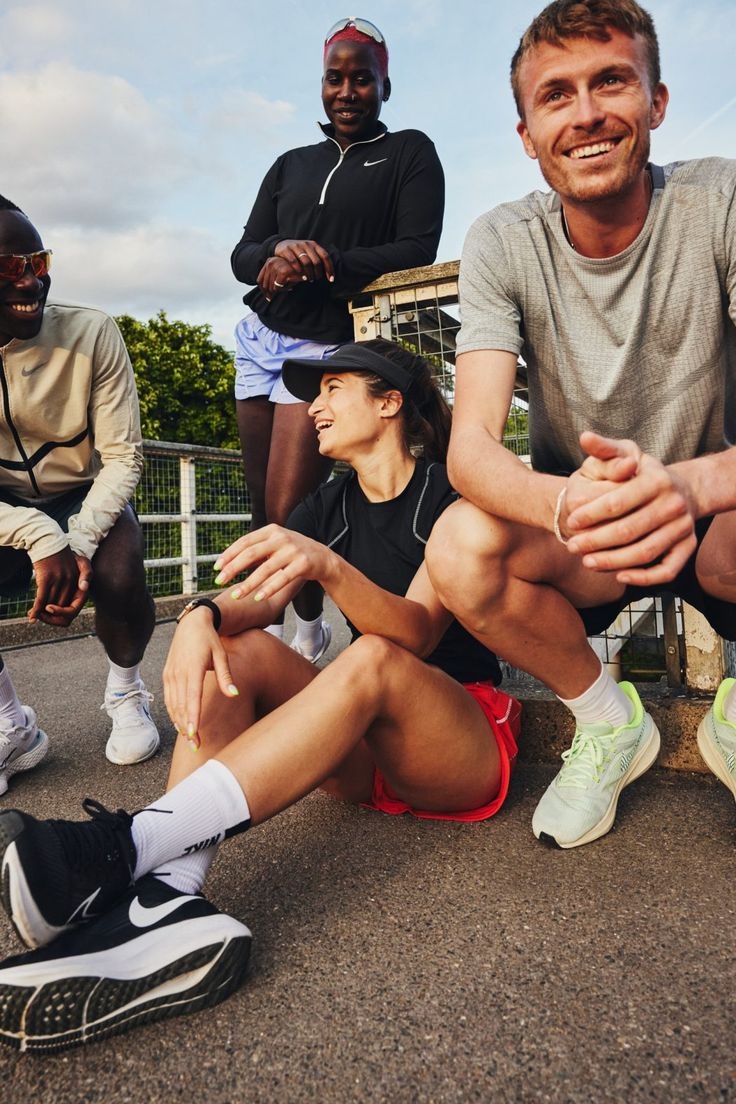Leveraging AI for Your Brand in 2025
Leveraging A.I. to the Fullest to Build Your Brand in 2025
In the span of a few years, artificial intelligence has become an indispensable co-creator for brand builders. It’s automating tedious tasks, sparking creative ideas, and analyzing data at a scale no human team could manage. Yet even as we lean into these AI superpowers, the timeless qualities of human insight, imagination, and empathy have only become more critical. This is the new balance of 2025: leveraging AI to the fullest while elevating the human touch that makes a brand truly resonate. In this article, we’ll explore exactly what AI can (and can’t) do for modern brand strategists and marketers. We’ll look at cutting-edge tools driving brand growth, highlight real-world examples of AI in action, and underscore why your human creativity and strategic thinking are still the secret sauce. Let’s dive in.
AI’s Brand-Building Superpowers in 2025
AI isn’t just a buzzword in 2025 – it’s a daily reality redefining how brands are built and scaled. Today’s forward-thinking marketers use AI as a force multiplier, a tireless assistant that can crunch numbers, generate content, and even help brainstorm strategy. What exactly can AI do for brand builders? Here are some of its key superpowers:
- Automation & Efficiency at Scale: One of AI’s greatest strengths is taking over the grind of routine work. From scheduling social posts to sorting your analytics, AI streamlines tasks that used to eat up hours. This means your team can spend less time on spreadsheets and more time on strategy and storytelling. In fact, much of Google’s own marketing spend is now “touched by AI,” driving substantial performance gains in campaigns. Across industries, companies large and small are seeing AI handle the heavy lifting – and reaping the rewards in productivity.
- Data-Driven Insights & Personalization: Beyond simple automation, AI’s real superpower is making sense of data at lightning speed. It can analyze mountains of market research, customer behavior, and social media chatter in seconds – spotting patterns and predicting trends that would elude even the savviest human analyst. The payoff is uncanny foresight: you can anticipate what customers might do next and personalize their experience accordingly. Machine learning models can now even infer customer intent, enabling ultra-targeted campaigns and product recommendations at massive scale. For example, Starbucks’ marketing team deployed Deep Brew, an AI engine that crunches loyalty app data to uncover customer preferences and buying habits. Deep Brew automatically generates personalized drink recommendations, special offers, and timely reminders tailored to each patron’s tastes. The results were striking – higher sales per visit and a boost in repeat business – as customers delighted in the “just-for-me” suggestions. In short, AI gives brands the power to treat millions of customers like regulars at the corner store, each receiving content and offers tuned to their individual interests. It’s marketing that feels like a service, not spam.
- Creative Content Generation: Perhaps the flashiest development has been AI’s leap into creative work. Generative AI has taken content creation to a whole new level, churning out high-quality text and hyper-realistic images – even videos and audio – that are often indistinguishable from human-made content. Need a blog post draft by noon? An AI writing assistant like GPT-4 can have it ready in seconds. Stuck on a visual concept? Tools like DALL·E or Midjourney can produce dozens of on-brand images or even logo ideas from a simple prompt. By 2025, an estimated 75% of businesses are using AI to streamline content creation, leveraging these tools to generate everything from social media captions to entire product photo shoots. This isn’t happening in a vacuum – brands are already riding the wave. Consider how BMW recently turbocharged its social media engagement using an AI-driven campaign. By analyzing live social data and auto-tailoring posts to audience interests, BMW’s team achieved a 30% jump in engagement and significantly broadened their reach, all thanks to AI-personalized creative content. That kind of lift in resonance – more likes, shares, and customer buzz – shows how AI can amplify a brand’s voice when used wisely.
- Speed and Agility: In the branding game, speed matters – and here AI truly shines. Tasks that once took weeks of iteration can often be done in days or hours. Need to test 50 ad variations to find the winner? An AI tool can simulate or live-test them almost overnight, revealing which message drives the most lift. Google’s marketing team, for instance, found that AI-powered creative testing can shrink timelines dramatically (from weeks to days) and accurately predict which ads will boost brand metrics. This kind of agility means brand builders can respond to trends in real time and continuously optimize campaigns. AI also helps teams do more with less – a crucial edge for lean startups and stretched marketing departments alike. Many mundane tasks (think sorting data, basic design edits, initial copy drafts) can be offloaded to algorithms, freeing up human marketers to focus on high-level creative and strategy. It’s no wonder forward-looking brands treat AI as a team member. As one content strategist quipped, AI is like having a tireless intern who never sleeps but can somehow read every customer comment on the internet before your 9am meeting.
- Lower Costs & Accessible Creativity: Another game-changing aspect of AI in 2025 is how it lowers the barrier to professional-grade branding. What used to require big budgets or agencies can now be achieved with affordable (even free) AI tools. From logo design to video editing, there’s likely an AI platform that can do 80% of the job at a fraction of the cost. For example, a solo entrepreneur can use an AI design assistant to generate a polished logo and brand kit in minutes, without hiring a designer. Platforms like LogoAI, Looka, and Tailor Brands offer AI-driven logo and style generation based on your inputs, instantly producing options that align with your aesthetic. Similarly, Canva and Adobe have baked AI into their creative software, enabling anyone to whip up eye-catching graphics, remove photo backgrounds, or even reformat layouts with just a few clicks. The efficiency is incredible – rapid prototyping is the new norm, allowing you to iterate brand visuals or messaging until it’s just right. In short, AI has made high-quality branding more accessible than ever. Small businesses and creators are leveling the playing field, using intelligent tools to punch above their weight in design and marketing. The result is a more creative, competitive landscape – and a necessity for everyone to stay sharp.
All of these capabilities add up to one thing: AI is now an essential ally in building brands. It delivers speed, scale, and data-powered insight that would be impossible to achieve manually. It helps us discover creative angles and efficiencies we might never have considered. And importantly, it makes marketing more customer-centric – by personalizing experiences and content, brands can form deeper connections with their audiences at scale. This is the win-win promise of AI: customers get more relevant, welcome interactions, while brands get better results for their efforts. Little wonder that experts call 2025 a year defined by balancing smart automation with human creativity. The potential is thrilling.
But (and this is a big but) – for all these superpowers, AI is not a magic wand that can do it all. If you’ve been nodding along enthusiastically, now it’s time to talk about the side of the coin we can’t ignore: what AI can’t do, and why the human element of branding is more important than ever.
What A.I. Can’t Do – The Human Advantage in Branding
With AI automating so much and generating content galore, it’s tempting to wonder: are human strategists and creatives still as vital as they used to be? The answer, unequivocally, is yes. The smartest algorithms in the world can’t rescue a poorly conceived brand or fix a bad idea. In fact, brands that treat AI as a cure-all often learn the hard way that without authentic human creativity and insight, their efforts fall flat. The truth is that certain things – the most important things in branding – remain uniquely human. Let’s highlight what AI still can’t do, and why it matters:
- Emotional Intelligence & Human Connection: AI excels at pattern recognition, but it doesn’t truly understand people. It can’t feel emotions, and it certainly can’t genuinely empathize. Building a beloved brand is as much about heart as it is about data. It’s the subtle art of knowing your audience’s hopes, fears, and values – and speaking to them in a way that moves them. That’s something no machine can replicate. Yes, a chatbot can answer customer questions 24/7, but it can’t deliver the warmth of a human conversation or the trust that comes from real human relationships. As one business leader put it, “AI can process data. But it can’t relate. It can’t care.” Those irreplaceable human qualities of empathy and emotional nuance remain the bedrock of strong brand connections. Even Fast Company’s tech experts note that while AI offers unprecedented speed and automation, it “can’t replace the irreplaceable human qualities” – especially emotional intelligence. We’ve seen this in practice: when Coca-Cola experimented with AI-generated ad campaigns, the content was technically impressive, but many viewers found it cold and artificial, saying “the magic had been lost”. The campaign missed that spark of humanity, and consumers felt it. It’s a cautionary tale that in branding, how you make people feel is everything. AI can help analyze or even imitate emotional tone, but it doesn’t actually feel – and customers can tell the difference. The bottom line: your brand still needs your heart. Emotional intelligence – the ability to read a room, sense the unspoken, and respond with genuine care – is a distinctly human skill that keeps your brand relatable and trusted in an era of automation.
- Creative Intuition and Storytelling: AI is a brilliant mimic and an endless idea generator, but it lacks that ineffable spark we call creativity. The best branding has a soul – a point of view, a story, a leap of imagination – that comes from human minds and experiences. Sure, generative AI can mash up tropes from its training data to spit out a slogan or design, but will it be truly original or culturally insightful? Often, not without human guidance. Great marketing campaigns tap into cultural currents, humor, and storytelling arcs that a machine learning model simply doesn’t grasp the way we do. In 2025, forward-thinking brand leaders view AI as a creative collaborator, not a replacement for human creativity. It can suggest countless variations and even surprise us with out-of-the-box concepts, but it’s the human creative director who knows which idea carries emotional resonance or aligns with the brand’s core story. AI, for all its brilliance, has no lived experience – it’s never had an “aha!” moment or a childhood memory that informs a campaign. As a result, it tends to remix the past rather than truly imagine the future. This is why authentic storytelling remains a human domain. We use our intuition to sense what will captivate an audience and our empathy to craft narratives that inspire. Adam Stewart, a marketing leader, perhaps said it best: AI brings efficiency and speed, “but it lacks the ability to see the bigger picture, interpret non-digital patterns or add the nuance that’s crucial for authentic storytelling”. In other words, the robot can write a script, but only a human can infuse it with real meaning and creative risk-taking. For brand builders, preserving that creative intuition – the bold idea, the gut feeling about a campaign – is key. AI can enhance creativity by handling the drudge work and offering suggestions, but the creative vision must come from you. After all, AI can’t fix a bad idea or give you a great one out of thin air. That’s your superpower.
- Strategic Thinking & Big-Picture Decision Making: Branding isn’t just about executing tasks – it’s about asking why and where to play. Defining a brand’s positioning, deciding how to navigate a complex market, or pivoting strategy in a crisis – these high-level decisions require distinctly human judgment. AI, at its core, is extremely sophisticated pattern math; it doesn’t have common sense or strategic foresight outside the data it’s trained on. It can’t set a vision for your company’s future or make values-driven decisions when the data is ambiguous. In 2025’s landscape, successful brand leaders are those who know when to leverage AI and when to rely on their own insight and intuition. Consider brand strategy: an AI can churn out a competitive analysis or even suggest marketing tactics, but it takes a human strategist to synthesize those inputs into a coherent plan that aligns with the brand’s mission and the real-world context. Human strategists also excel at the nuance – weighing intangible factors like brand heritage, customer trust, and ethical considerations that don’t fit neatly into an algorithm. Industry experts are clear that even as AI becomes central in marketing, human expertise remains irreplaceable for differentiation and long-term strategy. The best results come when AI handles the data and detail, and humans concentrate on guiding the ship. As noted in a CMSWire report, leaders agree that humans must remain at the helm of critical tasks like goal-setting, brand strategy, and ethical oversight of AI systems – areas that demand complex decision-making and emotional intelligence that machines cannot replicate. In practice, this means you as a brand leader still call the shots. Use AI for input, but trust your own experience to make the final calls. Strategic thinking also involves understanding context beyond the numbers – cultural trends, geopolitical shifts, the mood of your customer community. AI might highlight a trend in the data, but it takes human judgment to decide if that trend truly aligns with your brand’s story or if it’s a distraction. The enduring lesson: AI is an advisor, not a CEO. The vision and values of your brand must come from real people who can be accountable for the outcomes.
- Authenticity, Trust, and Relationships: Brands are ultimately built on relationships – with customers, partners, communities. And relationships run on trust. While AI can simulate personalization, it can’t build trust the way humans do. Trust comes from consistency, transparency, and doing what you say – essentially, from integrity and reputation earned over time. A human leader can apologize earnestly for a mistake or take a principled stand on an issue; an AI cannot. If you’ve ever dealt with a customer service AI that gave you perfectly correct information but still left you frustrated, you know the feeling: Something was missing. That something is the human touch – the feeling that a real person values your time and business. In branding, conveying authenticity is paramount. Audiences have finely tuned BS-meters; they crave genuine connection and can sense when a message is purely transactional. AI-generated content, if not carefully overseen, can sometimes veer into that uncanny valley of sounding formulaic or too good to be true. It takes human oversight to ensure brand communications stay authentic and reflect true brand values. Ethical judgment also comes into play here. AI will do exactly what it’s asked – which can backfire if nobody’s considering the broader impact. We’ve seen examples of AI-enabled targeting that, without human judgment, crossed privacy lines or inadvertently discriminated. Humans must provide the moral and ethical compass, ensuring that AI augmentations serve the brand’s goodwill and don’t undermine trust with stakeholders. Ultimately, people form bonds with people (even if there’s technology in between). The community around a brand – from engaged customers to passionate employees – is nurtured through human-led initiatives: thoughtful social media engagement, personal stories, listening and responding with care. AI can assist by providing data or initial responses, but making someone feel genuinely heard is another matter. As marketers experiment with AI chatbots and automated content, the standout brands will be those that balance automation with a human touch. They’ll use AI to enhance responsiveness and convenience, but always with a layer of humanity that reassures: “We see you. We hear you. We’re here for you.” In 2025 and beyond, that blend of tech and human empathy will define the strongest brands.
In short, AI can’t do the human part of branding. It provides the jetpack, but you’re still the pilot. As one marketing head advised, any company using AI to replace people rather than empower them is “missing the point”. The point is to let machines do what they do best (speed, scale, data) so that humans are free to do what we do best – forge relationships, craft meaning, and lead with creativity and conscience. The brands that thrive will be those that strike this balance: highly automated in execution, deeply human in direction.
The A.I. Toolbox for Modern Brand Builders
Now that we’ve covered the philosophy, let’s get practical. What tools and technologies should brand strategists, creatives, and marketing leaders be using in 2025 to harness AI’s potential? The good news is there’s an ever-growing arsenal of AI solutions – from well-established platforms to cutting-edge newcomers – designed to help you dream it, design it, write it, and deliver it faster than ever. Here’s a tour of some AI tools (and categories of tools) powering brand-building today:
- Generative AI for Writing and Ideation: At this point, almost every marketer has experimented with AI writing assistants. Models like OpenAI’s GPT-4 (accessible via ChatGPT) and emerging rivals like Google’s Bard or Anthropic’s Claude can generate surprisingly coherent and creative text on demand. These tools are fantastic for brainstorming taglines, generating blog drafts, crafting social media copy, or even helping define your brand voice. For instance, you can prompt ChatGPT with a description of your brand and ask for tagline ideas – within seconds, you have a dozen options to riff on. Specialized content platforms like Jasper and Copy.ai build on these AI models and tailor them for marketers, with templates for things like product descriptions, ad copy, or SEO-friendly blog sections. While you’ll always want to add your own polish (remember the authenticity and strategy we talked about), using AI as a writing partner can massively speed up content production. It’s like having a copywriter who works at the speed of light – giving you more time to refine messaging rather than start from a blank page. In fact, leveraging these tools is quickly becoming standard practice: marketers report huge boosts in productivity by letting generative AI handle first drafts and routine content so they can focus on higher-level edits and strategy. If you haven’t already, integrating a writing AI into your workflow is a must to stay competitive (just be sure to double-check facts and add that human touch in the final pass).
- AI-Powered Design and Creative Tools: Visual branding gets a major upgrade from AI as well. A variety of tools can help you create and customize brand assets with minimal effort. On the cutting-edge side, generative image models (like OpenAI’s DALL·E 3, Midjourney, or Stability AI’s Stable Diffusion) can produce original graphics, illustrations, and concept art from text prompts. This is a game-changer for brainstorming visuals – you can ask Midjourney to visualize, say, “a modern tech startup logo with a friendly robot mascot in blues and greens,” and it will generate unique images to inspire your design direction. Even if you don’t use the AI output verbatim, it’s a fast way to explore ideas. For more polished work, mainstream design platforms are incorporating AI right into the tools you already use. Adobe’s Creative Cloud now includes AI features (under the Adobe Sensei umbrella) that can do miraculous things: automatically select and remove backgrounds, suggest design adjustments, or generate variations of your layout. Adobe’s new generative fill in Photoshop, for example, lets you extend images or create new visuals with simple text prompts – great for mockups and marketing materials. Canva, a favorite for quick design needs, has rolled out AI-powered features too (like Magic Resize and AI image generation through Canva Assistant) to help non-designers produce slick graphics in no time. There are also AI logo makers and branding suites such as LogoAI, Brandmark, Looka, and Tailor Brands which were early to the game – these use algorithms to generate logo concepts and even entire brand identity systems based on some inputs about your business. They’re handy for small teams or startups developing an initial look and feel. While a seasoned designer will still add value (particularly to ensure the logo truly stands out and represents your unique story), these tools can serve as a starting point or a budget-friendly option. In sum, the AI design toolkit can handle a lot: from creating social media graphics, presentations and video thumbnails to editing product photos and even designing packaging concepts. Embrace these helpers – they drastically cut down production times and open up creative possibilities (ever tried seeing your brand mascot reimagined in 10 artistic styles? It’s pretty fun with AI image generators!). Just remember that final artistic judgement – choosing the right visual and ensuring it aligns with your brand’s persona – remains your call.
- Marketing and Analytics AI: Branding and marketing are two sides of the same coin, and AI is transforming both. On the marketing analytics front, AI tools can digest vast amounts of data and surface insights that help you refine your brand strategy. For example, Google Analytics and ad platforms use machine learning to identify patterns in customer behavior, attribute conversions more accurately, and even predict which users are likely to convert. Google’s own media team has noted that since integrating new AI into its ad products, they’ve seen significant performance gains, particularly in optimizing video campaigns. What this means for you: if you’re running digital ads or content campaigns, the algorithms behind the scenes (in Google, Facebook, etc.) are doing a lot of automated optimization – learning which audiences engage most, which creatives work best – and you should lean into those AI-driven recommendations. CRM and customer insight platforms are also supercharged with AI. Take Salesforce Einstein or Adobe Sensei in marketing clouds: these AI systems can analyze your customer data to recommend the best next action for each lead, optimize email send times for each contact, or even flag churn risks. In practical terms, they help you personalize outreach at scale (e.g., an AI might tell you that a certain segment of customers responds better to a particular offer, or automatically send a tailored follow-up email when someone shows interest in X product). This kind of micro-targeted marketing was nearly impossible manually; with AI, it’s increasingly turnkey. Social listening and sentiment analysis tools also use AI to help brands gauge how people feel about them in real time – parsing tweets, reviews, and comments to alert you of emerging trends or PR issues. For instance, AI-powered platforms like Brandwatch or Sprout Social can summarize thousands of mentions and tell you “your new ad campaign is getting positive sentiment in the 18–24 age group, but mixed reactions among older audiences” – insight you can act on quickly. And let’s not forget predictive analytics: from forecasting sales to suggesting which product a customer is likely to want next, AI prediction models (often baked into analytics software) give brand strategists a more proactive toolkit. The key for marketers is to embrace these analytics aids. They can point you to opportunities (or problems) you might miss and take over the minutiae of monitoring, so you can focus on creative strategy and decision-making. In 2025, being data-informed (with AI’s help) is essential to staying ahead.
- AI in Customer Experience & Engagement: A huge part of brand building is how you interact with customers – and AI is revolutionizing that front as well. Chatbots and virtual assistants have matured significantly by 2025. Tools like Intercom’s Fin (an AI support bot) or custom GPT-based assistants allow brands to provide instant, 24/7 customer service and guidance. These bots can answer frequently asked questions, help users navigate products, and even handle certain transactions. They reduce wait times and can scale personalized assistance to thousands of customers simultaneously. For instance, e-commerce brands use AI chatbots to recommend products based on a customer’s browsing behavior (“I see you’re looking at running shoes – can I suggest a top-rated pair within your budget?”). This not only boosts sales but also enhances the user experience by providing value quickly. The important thing, however, is designing these bots with a clear understanding of your brand’s tone and knowing their limits – when to smoothly hand off to a human for complex or sensitive issues, as the human touch is still needed for nuanced cases. AI-driven engagement isn’t limited to chatbots. Email marketing tools now use AI to craft subject lines that are more likely to be opened (tools like Phrasee or Persado analyze language that resonates) and to determine optimal send times for each recipient. Personalization engines on websites show dynamic content (like different homepage banners or product suggestions) tailored to each visitor’s profile, all powered by AI models behind the scenes. And in the realm of experiential marketing, some brands are dabbling with AI-powered interactive experiences – for example, AR/VR applications where AI adjusts the content of a virtual environment in real time based on user reactions. While these are still emerging, it’s clear that delivering a responsive, personalized experience is the name of the game, and AI is how we get there. The takeaway: to build a strong brand in 2025, think about how you can use AI to make your audience feel seen and served at every touchpoint, from their first website visit to their latest purchase. If you can anticipate needs and delight customers with smart, context-aware interactions, you’ll cultivate loyalty that no amount of traditional advertising can buy.
As you can see, the toolkit is rich and ever-expanding. It’s easy to feel overwhelmed by all the options, but you don’t need to use every AI tool out there to be successful. In fact, one lesson many teams learn is to identify the few tools that fit best with your needs and double down on those. Often the most effective solutions are ones that focus on doing one thing really well – whether it’s an AI that excels at generating video content or a platform that nails predictive analytics for your niche. It can pay to experiment, but also listen to what other creative leaders are finding useful. Many brands share case studies and insights on their AI experiments; for instance, marketers have highlighted how using an AI video generator like Synthesia slashed their video production time and costs, or how an AI copywriting tool freed up 20 hours a week for their content team. Learn from these stories, and don’t be afraid to pilot new tools on a small scale. The beauty of AI software is most of it is pay-as-you-go or subscription-based – easy to try and scale if it works, or pivot away from if it doesn’t.
Finally, keep an eye on emerging trends. One hot topic in late 2025 is the rise of AI agents – more autonomous AI programs that can perform multi-step tasks (think of them as AI project managers that can carry out a sequence of tasks with minimal guidance). While still early, experiments show these agents can handle things like drafting a complete marketing report by pulling data from various sources, or managing A/B tests across channels. It’s not far-fetched that soon you might delegate an entire campaign’s optimization to an AI agent. But again, these are tools to assist you, not replace you. The collaboration between human and AI will be the theme of the coming years.
Real-World Examples: How Brands Are Winning with AI
Nothing drives the point home better than seeing AI in action. We’ve already touched on a few examples – Starbucks personalizing rewards, BMW boosting social engagement, Coca-Cola learning about the need for human creativity. Let’s quickly recap and add a couple more real-world stories that show how modern brand builders are leveraging AI to grow and scale:
- Starbucks – Deep Brew for Personalized Marketing: The coffee giant has always been ahead of the curve in tech, and their Deep Brew AI is a perfect example. Deep Brew digests data from millions of mobile app orders and loyalty members. It then automatically crafts individualized offers – suggesting that pumpkin spice latte to the person who always gets seasonal flavors, or a breakfast sandwich deal to someone who usually comes in the mornings. These aren’t random; they’re data-backed suggestions aiming to delight each customer. The payoff? Higher average spending and a more loyal customer base. Starbucks reported that Deep Brew’s personalized recommendations led to a notable uptick in sales per customer, and loyalty program engagement surged as members felt understood by the brand. It’s a textbook case of AI creating a win-win: customers get relevant goodies, Starbucks gets more business.
- BMW – AI-Driven Social Media Campaigns: In a bid to connect with younger, digital-savvy audiences, BMW partnered with IBM’s Watson AI to supercharge a social campaign for new model launches. Watson’s AI analyzed live social media streams – trending topics, user sentiments, popular car memes – and helped BMW’s team serve up ultra-relevant content in real time. If a particular feature (say, an eco-friendly engine) was generating buzz, the AI would recommend content emphasizing that feature to those who showed interest. The results were impressive: a 30% increase in engagement metrics like likes and shares, and a broadened reach into demographics that previously weren’t engaging much with BMW. By tailoring content to what people genuinely cared about (thanks to AI insight), BMW cut through the social media noise. The lesson: AI can help even huge brands act hyper-local and personal in their messaging.
- Coca-Cola – AI Content Creation (and Lessons Learned): Coca-Cola made headlines by using AI to help create content for a recent campaign, tapping into a custom AI platform to generate hundreds of quirky visuals and ad copy variations. This helped their marketers produce content at a rapid clip and experiment with new ideas. However, one particular AI-generated ad faced backlash for feeling too automated – viewers felt it lacked the typical Coca-Cola warmth and authenticity. The company took the feedback in stride, realizing that AI is powerful for scaling production, but human oversight is needed to maintain the brand’s voice. Coca-Cola refined their approach by blending AI output with human creatives’ tweaks to ensure that each piece still had that Coca-Cola soul. The campaign later stabilized with engaging, AI-assisted visuals that fans appreciated, showing that a hybrid approach can work wonders. The big takeaway from Coke’s journey: AI can massively accelerate content creation (Coke’s marketing team noted they produced far more content than before), but you must keep a human hand on the wheel to steer the brand storytelling and avoid missteps.
- Small Businesses & Solopreneurs – Punching Above Their Weight: AI isn’t just the domain of global corporations. An inspiring trend in 2025 is how small brands and individual creators are using AI tools to achieve things that used to require whole teams. I’ve seen boutique e-commerce owners using AI to do photo shoots of their products without a photographer – e.g., generating clean background product images or even lifestyle shots via AI models. Personal trainers and coaches use AI video generators like Synthesia to create professional-looking promo videos featuring an avatar that delivers their script (saving them from having to invest in camera equipment or hire talent). Indie game and apparel brands use Midjourney to come up with artwork ideas and then collaborate with human artists to refine them. And countless solopreneurs use ChatGPT as a brainstorming buddy, marketer, and even code assistant all in one – helping them refine their brand messaging, draft emails, and build websites more efficiently. These examples show that AI can act as an equalizer, giving the “little guys” some of the capabilities that were previously the luxury of big companies with big budgets. A personal anecdote: a friend of mine launched a niche online cosmetics brand last year. As a one-woman show, she leaned heavily on AI – using a logo generator for her branding, ChatGPT to write product descriptions and Instagram captions, and an AI analytics plug-in to identify which products were trending with her audience. Within months, she had a polished brand presence and was competing with established players, many of whose teams were ten times the size. When I asked her how it felt, she said, “Honestly, I couldn’t have done it without the AI tools. They’re like my support staff.” This sentiment is echoed by many creative entrepreneurs now: AI tools are their secret weapon to stay agile and inventive without breaking the bank.
These stories underscore a common theme: brands win when they pair human inspiration with AI perspiration. The human teams set the vision and ensure authenticity, while the AI algorithms do the grunt work, surface insights, and even contribute ideas. Whether it’s a multinational leveraging AI to deepen customer engagement, or a startup using AI to appear as polished as a big brand, the formula is similar. By now, it’s clear that AI is not a fad or a nice-to-have – it’s a fundamental part of the modern brand-building toolkit. The key is knowing how to wield it effectively and ethically.
Conclusion: Future-Focused Branding – Where Visionary Meets Grounded
As we look ahead, one thing is certain: the future of branding is neither all AI nor all human. It’s the powerful fusion of both. In the Studio Wisdom spirit of being visionary yet grounded, consider this your rallying call: Embrace the A.I. revolution with eyes wide open, and anchor it in what makes your brand uniquely human.
Imagine the possibilities in the coming years. AI will likely get even better – smarter models, more automation, deeper insights. You might have AI agents scheduling your campaigns, creating content in formats we haven’t even dreamed of yet, perhaps even managing personalized customer journeys end-to-end. It’s exciting, and a little dizzying. But no matter how advanced A.I. becomes, your brand’s success will still hinge on things algorithms can’t quantify: your creativity, your values, your understanding of your customers as people, and the trust you cultivate. As Harvard Business Review noted, the marketers who thrive will be those who skillfully combine AI’s capabilities with human expertise. They’ll use AI to be bigger, faster, smarter – but they’ll use their human touch to be authentic, compassionate, and strategic.
So, leverage AI to the fullest. Let it inspire you, save you time, and arm you with insights. Dive into the tools that make sense for your brand’s journey – whether that’s automating your content calendar, generating immersive new customer experiences, or crunching data to find your next big opportunity. Be bold in experimenting; being an early adopter of a great tool can give you an edge. At the same time, double down on honing your uniquely human skills. Cultivate your team’s emotional intelligence and creativity. Spend time on the high-level thinking – the “why are we doing this?” questions – that no machine can answer for you. And make sure the heart and soul of your brand shine through in everything you do, AI-assisted or not.
In practice, this might mean setting some guidelines: for example, use AI to draft that campaign, but always review it to ensure it sounds like us. Use AI to analyze feedback, but decide as a team what feels right to act on. Think of AI as an amplifier – it will amplify whatever direction you give it. Your job is to point it the right way, fueled by a clear brand purpose and empathy for your audience.
As we navigate 2025 and beyond, it’s helpful to remember that every major technological shift in marketing – from the printing press to the internet – initially raised fears of the human element getting lost. Yet each time, it was the savvy marketers and creators who learned to harness the new tech alongside human insight that advanced the field. AI is no different. It’s not here to take the creative crown from us, but to hand us a supercharged toolkit.
The future of brand building belongs to those who can be tech-powered but human-centered. Picture a world a few years out: your brand brainstorms might involve you, your team, and an AI or two, all sitting at the virtual table. The AI throws out data points and rough drafts; you and your colleagues bring the taste, the vision, the gut checks. Together, you come up with campaigns that are both highly innovative and deeply resonant. That’s not science fiction – that’s the emerging reality.
Ultimately, leveraging A.I. to the fullest is about amplification of your abilities. It lets you focus on what really matters – crafting a brand that stands for something and forges real connections – while handling the mechanics and minutiae at scale. In this way, AI isn’t the enemy of creativity or authenticity; it’s the catalyst for even greater heights when used wisely.
So go forth and experiment fearlessly. Be the strategist who’s also an “AI whisperer,” the creative leader who’s not afraid to collaborate with a machine. Stay curious, stay ethical, and keep your brand’s humanity front and center. If you do that, you’ll not only stay ahead of the curve – you’ll help define what the curve becomes. Here’s to a future where our intelligent machines and our own wisdom work hand in hand to build brands that truly inspire. The brands of 2025 and beyond will be born from this synergy of innovation and intuition, logic and magic. And that, more than anything, is leveraging AI to its fullest. Go get it!


Ready to build your brand?









.avif)
